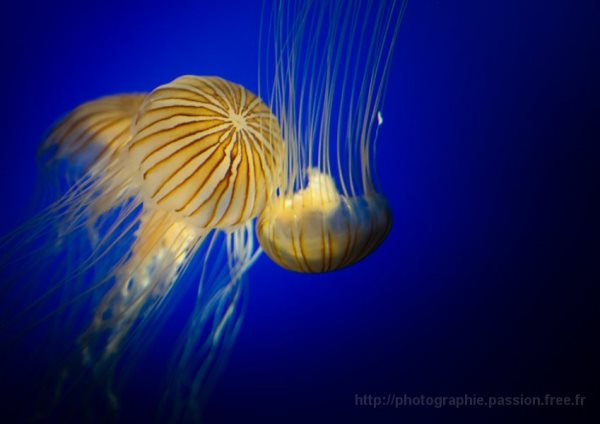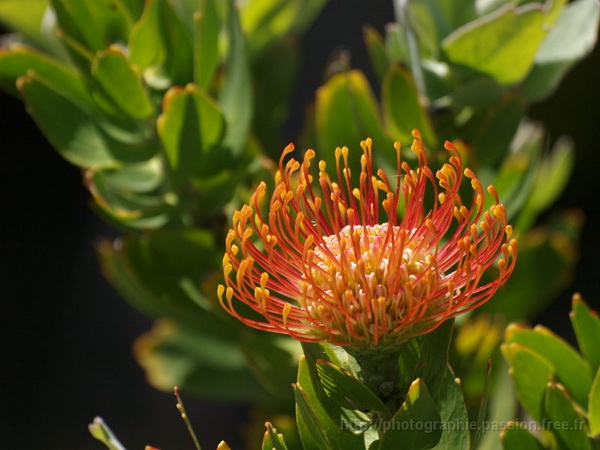Updated : Saturday, February 18th, 2012
The Diaphragm is an iris consisted of several small strips placed in front of the objective. It is him who is going to allow in more or less of light to penetrate into the objective and to strike the cell(unit). It is also called 'Opening'. We understand that more the opening is big and more light will penetrate into the device.
The peculiarity of the diaphragm, it is because the more the figure is small, the more the opening of the iris is big, and conversely more the figure will be big, more the size of the iris will be small. We always speak about maximal opening and/or about minimal opening. In the case of a range of opening from f/2.8 to f/32, we shall say: f/2.8 is the maximal opening and f/32 is the minimal opening.
The diaphragm is always represented by a letter 'f' followed by a figure for focal fixed and of the second figure in the case of a zoom. The objectives possessing a fixed opening are the the most expensive.
Attention, if you see an opening of f/2.8 on an objective, it means simply that it is the maximal opening which the objective can reach. It will be impossible to him to have a superior opening. He can be used in f/22 or with an opening even lower, but can never achieve f/2 or f/1.
In the case of a zoom, both figures will be to use with compared with the range of focal. One 'Olympus ED 12-60mm f/2.8-4.0 SWD' will have a maximal opening of f/2.8 in focal 12mm and a maximal opening of f/4.0 in focal 60mm. He can have an opening of f/32 in focal 12mm.
The various openings which we find are: f/1, f/1.2, f/1.8, f/1.4, f/2, f/2.8, f/3.5, f/4, f/4.5, f/5.6, f/8, f/11, f/16, f/22, f/ 32, f/45 and f/64. Certain objectives of average ranges have openings going from f/5.6 to f/22, while the top of the range will have a range of wider opening.
There is even an objective, the 'VOIGTLANDER Nokton 25mm f/0.95 Frame Micro 4/3' with a maximal opening of f/0.95 and a minimal opening of f/16.
To know which opening we use, we divide the focal by the diameter of the iris. Or if we wish to know the diameter of the iris, we divide the focal by the opening. The result so obtained is indicated in millimeters (mm).

Photo taken with a Canon 5D MkII and a Canon 24-70mm (ISO3200 - f/2.8 - 1/30s)
| For example with a un canon 70-200 f/2.8 : | |||||||
|---|---|---|---|---|---|---|---|
| Opening | |||||||
| Focale | f/2.8 | f/5.6 | f/8 | f/11 | f/16 | f/22 | f/32 |
| 70mm | 25 | 12,6 | 8,75 | 6,36 | 4,38 | 3,18 | 2,18 |
| 110mm | 39,28 | 19,64 | 13,75 | 10 | 6,88 | 5 | 3,43 |
| 150mm | 53,57 | 26,78 | 18,75 | 13,63 | 9,38 | 6,81 | 4,68 |
| 200mm | 71,42 | 35,71 | 25 | 18,18 | 12,5 | 9,09 | 6,25 |
By looking at the characteristics of the Cannon 70-200 f/2.8, it is easy to understand(include) that the objective cannot have an opening of f/1.4, because the diameter of the objective is of 77mm. By doing the calculation of 200mm by the focal of 1.4, we obtain 142mm, that is a diameter upper to the existing diameter of the objective.
Other peculiarity of the diaphragm, it is because you go to be able to play with shutter speeds. In the case, or you wish to make a photo with effects of fuzziness or nets, you go to have to also reduce the opening to avoid burning (return the white photo by an overexposure of light) the photo. And to congeal an object, for example a bird who steals or one car in full race, you will be obliged to reduce the speed at most (eg: 1/2500s), while maximizing the opening (eg: f/2.8).
The diaphragm will not give you simply a capacity to put back more or less of light or to play with the speed, but will also give you the possibility of having a depth of field, more or less big. For the portrait, you will need to have a shallow depth of fields, for lack of the landscape and of the macro which will need a big depth of field.
| Attention, these figures are given for information purposes, they are not to be taken literally. | |
|---|---|
| Action | Opening |
| Portrait | f/2.8 - f/5.6 |
| Landscape | f/22 - f/32 |
| Macro | f/8 - f/16 |
| Proxy-photographie | f/5.6 - f/8 |
| Opening | Report 5:1 - Focal 65mm | Report 1:1 - Focal 65mm |
|---|---|---|
| f/2.8 |  1/15 s. |
 1/2 s. |
| f/5.6 |  1/4 s. |
 1/3 s. |
| f/8 |  1/2 s. |
 1/6 s. |
| f/11 |  1 s. |
 1/13 s. |
| f/16 |  2 s. |
 1/50 s. |
You can see it with the examples above, I took the same object with two reports different, but especially with different openings. The device was put first and foremost Opening, the rest of the parameters was calculated by the case. I did not modify photos in post-production, except for their sizes (size of departure of 5.616 x 3.744 pixels, reduced to 200 x 133 pixels).
We see good that the depth of field was transformed according to the opening. The shutter speed also received a modification, to allow the device to receive a quantity amounts of lights on each of the photos.

Photo taken with an Olympus E-3 and an Olympus 14-54mm (ISO250 - f/5.6 - 1/250)